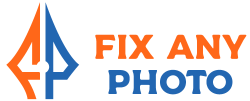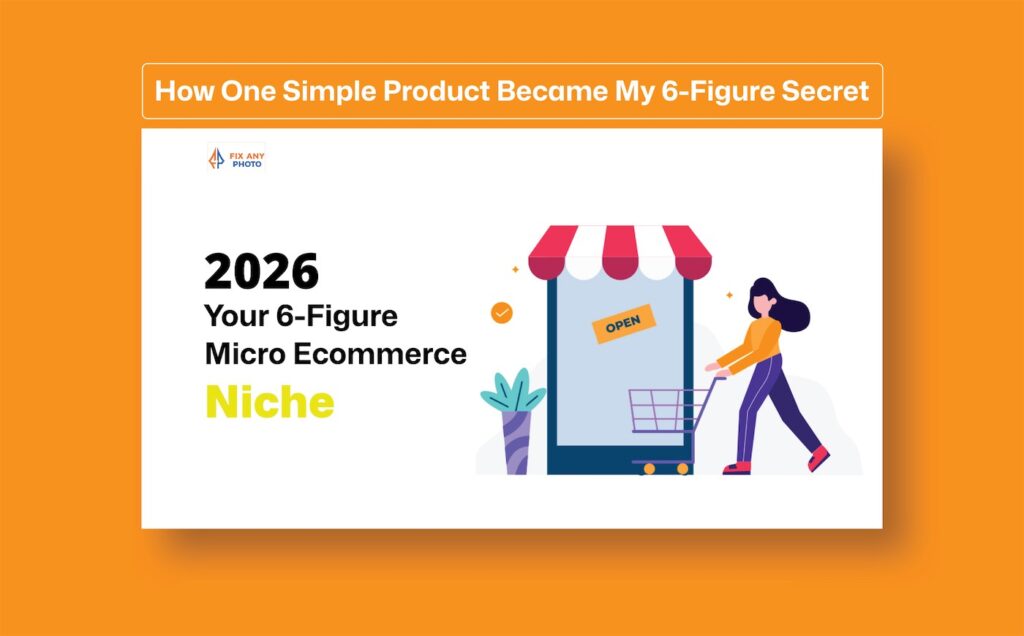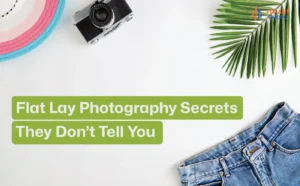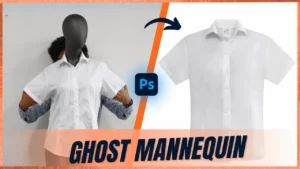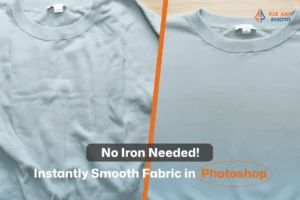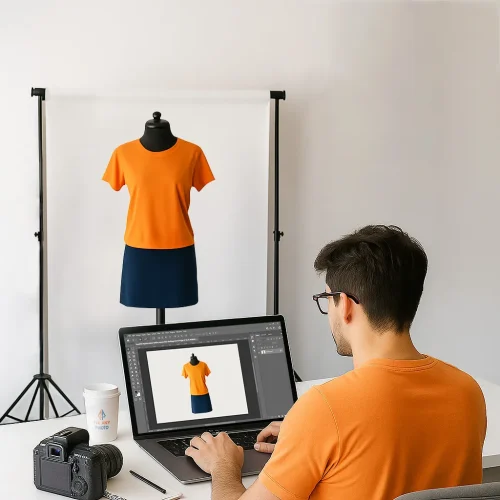Imagine this: It’s New Year’s Eve 2025. The fizz is flowing, you’re scrolling through your phone, and you keep seeing the same listicles of “top ecommerce niches” for the coming year. Eco‑friendly this, wellness that, pet products again… yawn.
You know you want to build something big, a business that actually pays the bills and then some. But every article feels like an echo of the same old safe bets. Where’s the spark? Where’s the roadmap to a real, profitable niche you can own?
If I had to start from zero and hit $100K in revenue next year, I wouldn’t rely on any of those cookie‑cutter lists. I’d treat niche selection like the single most important decision of my business, because it is.
The right niche can dramatically lower your ad costs (while everyone else watches theirs explode) and makes your brand magnetic to a small but hungry group of buyers. The wrong one? You’ll spend every waking minute fighting to be seen.
-
The hard math behind a six‑figure niche (no fluff, just reality).
-
A ruthless filter to weed out bad ideas before you waste time and money.
-
Micro‑niches for 2026 you won’t find on any other list – including sports and AI‑powered opportunities.
-
A validation sprint to test your favourite ideas in a single afternoon.
-
And finally, how to defend your niche once it starts taking off.
The $100K Reality Check (No Hype, Just Math)

First things first: what does a six‑figure ecommerce business really look like? Forget the Instagram posts of entrepreneurs on yachts.
We’re talking about a shop that generates roughly $100,000 in revenue a year. Break that down, and it’s about $8,400 per month. Sounds doable, right?
But there’s more to it than revenue. You need to understand average order value (AOV), profit margins, conversion rates, and traffic.
For example, if your AOV is $60 and your profit margin after product costs, shipping and fees is 30%, that’s $18 profit per order. To hit $8,400 in revenue, you’d need roughly 16 orders per day:
-
Revenue goal: $8,400 / month
-
AOV: $60
-
Profit per order (30% margin): $18
-
Orders needed: 467 per month ≈ 16 per day
Now multiply that by your conversion rate. If your website converts at 2%, you’ll need around 800–900 visitors per day. If your product is more expensive or has higher margins, you can get there with fewer customers.
But if you sell low‑ticket items with tiny margins, you’ll need massive traffic or endless ad spend – not a realistic strategy for small brands.
Here are five non‑negotiables I look for in any potential six‑figure niche:
-
Average order value between $50 and $200. You need enough room to bundle products or offer premium kits.
-
Healthy margins (30% or more). After product costs, shipping, platform fees, and a baseline for marketing, there should be meaningful profit left.
-
Repeatability. Does your product encourage refills, consumables, accessories, subscriptions, or upgrades? One‑off novelty items rarely scale.
-
Clear targeting. You must know exactly who your buyer is and where to find them.
-
A moatable angle. Can you build a story, community, or product feature that others can’t easily copy?
Quick paths to $100K: Let’s look at a few simplified scenarios:
| Scenario | AOV | Margin | Orders/Month | Daily Visitors (2% conversion) |
|---|---|---|---|---|
| Premium Kit | $120 | 40% | 175 | ~300 |
| Mid‑Price Bundle | $75 | 35% | 300 | ~500 |
| Low‑Price Subscription | $40 | 50% | 525 | ~900 |
| Hybrid Digital + Physical | $90 | 60% | 200 | ~350 |
These numbers aren’t gospel, but they show the relationship between price, margin, and the effort required. A niche that supports higher AOV and margin reduces the daily hustle.
Why I’m Not Copying Those “Top Niches” Lists

Every year, blog after blog trots out the same long lists of niches: sustainable products, health and wellness, pet supplies, smart home gadgets and subscription boxes.
Are those industries valid? Sure. Sustainability is now a mainstream purchase driver. The pet supplements market alone is expected to hit $3.73 billion by 2030.
Customer acquisition costs are rising across the board, so focusing on loyal communities matters more than ever. And AI is shaping every aspect of ecommerce, with 75% of small and medium‑sized businesses experimenting with AI tools.
But here’s why those lists fail:
-
They stop at surface trends. They tell you to “sell sustainable products” but don’t tell you which eco niches have decent margins, real demand, and room to differentiate.
-
They ignore the math. They rarely mention AOV, margin or repeatability. Without those, you can’t build a six‑figure business.
-
They don’t show you how to narrow down further. “Pet products” is a giant industry. “Allergy‑safe treats for senior small‑breed dogs” is an opportunity you can own.
-
They lack a moat strategy. If a trend is obvious to everyone, expect fierce competition from bigger players. You need a story, ritual or community that cannot be ripped off overnight.
So let’s stop following broad categories and start building micro‑niches you can truly own.
My 2026 Niche Filter: The 7 Gates

To keep myself from falling in love with bad ideas, I run every potential niche through a seven‑gate filter. Rate each gate on a scale of 0 to 10. If the total scores above 70, it’s worth exploring. Below 50? It’s a hard pass.
-
Pain or Passion. Are buyers driven by a real problem (e.g., chronic back pain) or a deep passion (e.g., collecting vintage handheld consoles)? If they don’t care deeply, they won’t pay a premium.
-
AOV Ladder. Can I build my core offer to reach $60–$120? Think hero product plus complementary items or bundles.
-
Margin Map. After factoring product costs, packaging, shipping, fees, and a baseline cost to acquire a customer, am I left with at least a 30% margin?
-
Repeat Engine. Does the niche naturally lend itself to refills, accessories, or subscriptions? Or are there adjacent products that users will crave over time?
-
Targeting Clarity. Can I find these customers easily? Are there subreddits, Facebook groups, hashtags, influencer communities, or forum niches where they hang out?
-
Differentiation Lever. Can I do something differently – unique ingredients, ergonomics, design, packaging, brand story, or serving ritual – that sets me apart?
-
Future‑Proof Tailwind. Does the niche ride a larger societal or technological wave like demographic shifts, sustainability, AI adoption, or wellness? That ensures the market won’t collapse after one season.
A quick example: “Reusable water bottles” score low on differentiation – they’re everywhere – while “eco refills for luxury dish care that actually cut grease” score high on AOV, margin and ritual because you can deliver scented concentrates and beautiful glass bottles again and again.
Niche Atoms: Breaking Big Markets into Money‑Making Slivers

Let’s talk about going from generic to atomic. When you hear “health and wellness” or “sports equipment”, your brain probably conjures images of yoga mats, dumbbells and protein shakes.
Those categories are saturated. To build a business that stands out, you have to zoom in and identify a persona, a context and a specific job‑to‑be‑done.
-
Who exactly? A persona slice with clear demographics and psychographics. Maybe it’s “moms over 35 who run marathons for charity” or “busy nurses working night shifts.”
-
Job‑to‑be‑done. What are they trying to accomplish? Reduce recovery time, calm anxiety, fix elbow pain, build an at‑home studio, etc.
-
Usage context. Are they at home, at work, on the road, or on the field? A side sleeper on a long flight has very different needs than a gamer at a desk.
-
Buying triggers and blockers. What makes them urgently need a solution? What stops them from buying? Cost, complexity, fear of injury, messiness, aesthetic concerns?
Take “fitness” as an example. Broad. Now break it down:
-
Persona: 35+ office workers with back pain.
-
Job: Fit in 15 minutes of mobility while working.
-
Context: At a desk.
-
Trigger: Chronic discomfort and fear of long‑term injury.
-
Blocker: Lack of time and knowledge.
From this, you could create a 15‑minute Desk Mobility Kit: a set of compact tools and a laminated routine that fits in a drawer. That’s an atomic niche you can own. When you turn a commodity into a ritual, you also make it moatable.
Ready to see this in action? Let’s explore some wild, micro‑niche ideas you could take and run with in 2026.
The 2026 Micro‑Niche Field Guide (Not the Usual Suspects)

Each micro‑niche below answers our seven‑gate filter. They’re intentionally weird, specific, and designed for a real group of people with real needs.
For each one, I’ll outline who it’s for, what problem it solves, a hero bundle idea, how to reach them, and a quick test to see if there’s money in it.
Use these as inspiration, you don’t need to pursue them verbatim, but they’ll show you what’s possible when you stop thinking generically.
1. Travel‑Shift Recovery Kits for Endurance Moms 35+
- Who: Moms over 35 who run marathons, triathlons or ultra races while balancing full‑time jobs and family. They travel frequently for races and need portable recovery.
- Hero bundle: A lightweight zip kit with electrolyte powder, a mini muscle roller, magnesium lotion, and a card outlining a 10‑minute post‑race ritual.
- AOV path: Start at $79; add a subscription refill for electrolytes and massage oil.
- Find them: Women’s running subreddits, marathon Facebook groups, and events like the Rock ‘n’ Roll Marathon Series.
- 30‑day test: Create a waitlist landing page offering a limited beta kit for the next marathon expo. DM women you find in running communities with a quick survey and early sign‑up link.
2. Allergy‑Safe Treats for Senior Small‑Breed Dogs
- Who: Pet parents with older Chihuahuas, Yorkies and other small breeds who have digestive or skin sensitivities.
- Problem: Existing treats upset their stomachs or cause allergies.
- Hero bundle: A monthly subscription of single‑ingredient chews (e.g., freeze‑dried duck or rabbit) plus a probiotic supplement.
- AOV path: $49 monthly subscription with options to add joint support or dental chews.
- Evidence: The pet supplement sector is growing strongly, expected to reach $3.73 billion by 2030
- Find them: Breed‑specific Facebook groups, TikTok accounts dedicated to senior dogs, vet offices.
- Moat: Transparent sourcing, limited ingredients and vet partnerships.
3. Desk‑Friendly Sensory Regulation Gear for Neurodivergent Professionals
- Who: Adults with ADHD, autism, or sensory processing disorder working in corporate environments.
- Problem: Overstimulation and anxiety at the office.
- Hero bundle: Quiet tactile objects (like a matte silicone fidget stone), a weighted lap pad disguised as a cushion, and a discrete ring with subtle textures.
- AOV path: $75 for the starter pack; optional monthly rotation of new fidgets to keep things novel.
- Find them: ADHD forums, LinkedIn groups on neurodiversity at work, and #ActuallyAutistic communities on Twitter.
- Moat: Collaborate with therapists to design objects that genuinely calm rather than distract.
4. Creator “One‑Light Film Kit” for Solo Educators
- Who: Coaches, fitness instructors, teachers and DIY creators making courses or tutorials at home.
- Problem: Amateur lighting makes their videos look unprofessional, but full studio setups are expensive and complicated.
- Hero bundle: One softbox with an integrated daylight bulb, a clamp arm for smartphones, a collapsible backdrop with reversible colours, and a few backdrop presets in an AI editing app.
- AOV path: $149; upsell with a mic and AI‑powered video editing templates.
- Find them: YouTube creator forums, TikTok “teach on TikTok” groups, Facebook groups for course creators.
- Differentiation: Provide step‑by‑step filming workflows so they feel confident out of the box.
5. Low‑Stim Aromatherapy + Weighted Throws for Night‑Shift Nurses
- Who: Nurses working overnight in hospitals who need help winding down after shifts.
- Problem: They are overstimulated and sleep in the day; heavy blankets and strong scents can be too much.
- Hero bundle: A lightweight weighted throw with a gentle pressure distribution and a set of low‑stim essential oil rollers (lavender/bergamot) that are mild, not overpowering.
- AOV path: $110 kit; monthly oil refills for $19.
- Find them: Nursing forums, TikTok nurse communities, hospital staff groups.
- Moat: Collaborate with sleep scientists and emphasise the scientific benefits of low‑stim scents.
6. RV Pet Safety + Temperature Monitoring Kits
- Who: Pet‑owning nomads living or vacationing in RVs.
- Problem: RVs can overheat quickly, putting pets at risk.
- Hero bundle: A temperature sensor with cellular connectivity, an app that alerts owners if temps get too high, and a backup battery.
- AOV path: $199 kit; annual service plan for data.
- Find them: RV life YouTube channels, dog‑friendly travel Facebook groups.
- Moat: Add a community where RVers share safety tips and get your gear recommended by industry influencers.
7. Adaptive Kitchen Tools for Arthritic Home Cooks
- Who: Older adults or people with arthritis who love to cook but struggle with jar lids, chopping, or grip strength.
- Problem: Standard utensils hurt and make cooking less enjoyable.
- Hero bundle: Grip‑assist jar opener, ergonomic knife, levered cutting aid, and thick‑handled utensils, plus printed recipe cards with adapted instructions.
- AOV path: $99; sell replacement blades and seasonal recipe packs.
- Find them: Facebook caregiver groups, arthritis support forums, and home cooking YouTubers with older audiences.
- Differentiation: Involve occupational therapists to design tools that truly reduce strain, not gimmicks.
8. Postpartum Swim & Lounge Wear with UV + Nursing‑Friendly Cuts
- Who: New moms who want to feel confident at the pool or beach while nursing.
- Problem: Swimwear rarely offers both UV protection and easy nursing access.
- Hero bundle: A capsule wardrobe of mix‑and‑match swimwear and lounge pieces with built‑in nursing panels and UPF 50+ fabric, plus a quick‑dry cover‑up.
- AOV path: $140; upsell matching kids’ swim gear and postpartum recovery accessories.
- Find them: Mom blogs, postpartum communities on Instagram, prenatal classes.
- Moat: Create a supportive community where moms share postpartum body positivity stories.
9. Compact Home Scent Labs for Renters (No Flame, No Oil Leaks)
- Who: Apartment dwellers who love home fragrances but can’t light candles or want to avoid messy oils.
- Problem: Traditional diffusers leak and open flames violate lease rules.
- Hero bundle: A sleek nebuliser device that uses dry scent pods (no liquid) and a starter pack of four scents.
- AOV path: $119; monthly scent club with new blends ($29).
- Find them: Aromatherapy bloggers, apartment‑living TikTok channels, and dorm decor communities.
- Moat: Develop a patented dry pod system and release seasonal scent collections so users stay subscribed.
10. Kid‑Safe Maker Kits for Apartment Crafters (No Mess/No Heat)
- Who: Parents and elementary teachers living in small spaces who want to encourage kids’ creativity without a mess.
- Problem: DIY kits often require hot glue, paint or chemicals.
- Hero bundle: Reusable foam shapes, felt stickers, and glue dots with project cards, plus options to refill with new designs monthly.
- AOV path: $45 kit; subscription refills at $20.
- Find them: Pinterest boards, teacher Facebook groups, Instagram craft accounts.
- Moat: Partner with educators to create STEAM‑themed kits and reward kids for sharing creations in a safe online gallery.
11. Eco Refills for Luxury Dish Care That Actually Cut Grease
- Who: Home cooks who love fancy dish soaps but hate buying bulky plastic bottles.
- Problem: Traditional eco refills leave residue; mainstream brands are wasteful.
- Hero bundle: Beautiful glass bottles plus concentrated refills in compostable packaging with high‑performance formulas.
- AOV path: $69 initial set; $25 monthly refills.
- Find them: Sustainable living blogs, zero‑waste forums, design‑conscious home décor channels.
- Moat: Use distinctive scent stories (e.g., “Midnight Lemon Grove”) and invest in performance.
12. Pickleball Precision Grip & Elbow‑Safe Kit for 30+ League Players
- Who: Adults over 30 playing in recreational pickleball leagues who want to prevent elbow pain and improve grip.
- Problem: Cheap overgrips wear out quickly and wrong grip thickness causes tennis elbow.
- Hero bundle: Custom overgrips with moisture‑wicking fabric, vibration‑dampening inserts, a compression elbow sleeve, and a mini massage ball for forearm recovery.
- AOV path: $69 kit; upsell replacement overgrips and joint‑health supplements.
- Find them: Pickleball Facebook groups, local league newsletters, courtside events.
- Moat: As a professional pickleball player, you can use personal stories and on‑court testing to build credibility.
13. Micro‑Club Kits for Local Sports Leagues
- Who: Organisers of niche sports clubs (padel, futsal, spikeball) who need quick branded starter kits for new members.
- Problem: New players show up without proper gear, and clubs spend hours sourcing items individually.
- Hero bundle: A duffel with the required paddle/racket, a branded T‑shirt, a set of balls, and an official rule book or drill deck.
- AOV path: $149 kit; recurring revenue from replacing equipment and selling team‑specific apparel.
- Find them: League registration sites, Meetup groups, community sports centres.
- Moat: Offer a white‑label service so clubs can add their logos and colours.
14. Data‑Driven At‑Home Skills Stations for Youth Athletes
- Who: Parents of kids aged 8–14 who want to practice a specific sport at home (e.g., soccer, basketball, pickleball).
- Problem: Drills at home are boring and not measurable.
- Hero bundle: Collapsible cones, a smart sensor to track speed and accuracy, and an app with training plans.
- AOV path: $179 kit; subscription to premium training programs.
- Find them: Youth sports forums, coaching podcasts, Facebook groups for soccer parents.
- Moat: Make your sensor sync with an app that rewards kids with badges and progress charts, turning practice into a game.
15. AI‑Powered Product Photo‑in‑a‑Box Kit for Micro‑Brands
- Who: Small e‑commerce owners who take product photos on their kitchen table and struggle to make them look professional.
- Problem: Hiring a photographer is expensive; DIY photos look amateur.
- Hero bundle: A collapsible mini‑studio with adjustable lighting, interchangeable backdrops, props for scale, and a subscription to an AI prompt library that instantly improves lighting and adds realistic shadows or textures.
- AOV path: $149 kit; monthly fee for AI prompt packs and editing credits.
- Find them: Etsy seller forums, Shopify community boards, Reddit r/smallbusiness.
- Moat: Provide templates tuned for specific product categories (jewelry, candles, clothing) and keep updating prompts as AI evolves.
16. AI + Paper Hybrid Planning Kits for Niche Professionals
- Who: Professionals like wedding planners, business coaches or Etsy sellers who love writing on paper but also need digital automation.
- Problem: There’s a gap between beautiful paper planners and AI scheduling tools.
- Hero bundle: A premium physical planner with QR codes on each page; when scanned, they open AI workflows designed for that profession (e.g., an automatically generated guest list, timeline, or weekly marketing plan).
- AOV path: $89; subscription for AI workspace access and template updates.
- Find them: LinkedIn groups, professional associations, and event planner communities.
- Moat: Create unique AI flows for each profession and license the system.
These hybrid kits merge the best of analog creativity and automation, similar to how AI tools for removing wrinkles make visual editing seamless, these planners connect old-school paper habits with smart AI workflows built for modern professionals.
Moat Mechanics in 2026: Defend Your Niche

Finding an exciting micro‑niche is just the start. Anyone can copy a product. What keeps customers coming back is a moat: a defensible edge that makes your brand the default choice. Here are five moat mechanics to build into your niche:
-
Ritualization. Turn usage into a named habit. Don’t just sell a weighted throw; sell “The 30‑Second Wind‑Down Ritual.” Print the ritual on a card. Share videos of people using it. When a product becomes a routine, switching feels like breaking a habit.
-
Configurable bundles. Build guided quizzes that recommend pre‑bundled stacks. This raises AOV and removes choice paralysis. For example, a sensory regulation gear quiz could ask about work environment and suggest specific fidgets and lap pads accordingly.
-
Community layer. Create private spaces (Discord, Facebook groups, Slack) where customers can share their experiences, show off modifications, and shape future products. Co‑create limited drops with superfans.
-
Zero‑party data. Ask friendly onboarding questions (e.g., “What’s your biggest elbow pain?”) and use that data to send better product recommendations. People love being understood and are happy to share when they feel the benefit.
-
Education as product. Add laminated cards, mini‑zines, QR‑linked micro‑lessons, or even short audio guides. For example, a foot‑pain relief kit should include a printed stretching routine and a video library. When education is bundled, your product has more value than a competing commodity.
The 60‑Minute Validation Sprint
Before investing months of effort, run a one‑hour field test. Here’s how:
-
Community scrape (20 mins). Dive into three or four communities where your audience hangs out. Collect 20 pain quotes (what they complain about), 10 wish‑list items (“I wish there was a _____”), and 10 current hacks (how they’re solving the problem today).
-
Offer shadow (15 mins). Draft a hero bundle outline and a simple price ladder (e.g., $39 basic, $69 premium, $119 deluxe).
-
Fast signals (15 mins). Build a minimalist landing page with a headline, a promise, and a mockup (Figma or Canva works). Then push it to your community: run a low‑budget ad, share the link in groups, or message a handful of potential users. Set thresholds like CTR > 1.5%, opt‑in rate > 25%, or at least 50 waitlist signups in 72 hours.
-
Kill/Keep rules (10 mins). If your test hits your thresholds, move forward. If not, ask the people who clicked what stopped them. Either adjust the offer or ditch the idea.
This sprint avoids the trap of spending months building something no one wants. With real data, you can move confidently.
Weekend MVP → 30‑Day Traction Plan
Once your validation sprint gives you a green light, build a minimum viable product (MVP) and start selling.
Weekend (Day 1‑2)
-
Set up a pre‑order landing page using Shopify, WooCommerce or even a simple form.
-
Create three pieces of content: a hook video (showing the pain and solution), a behind‑the‑scenes story (how you developed the kit), and a testimonial or unboxing clip (can be a mock if you don’t have customers yet).
-
Start collecting emails; promise early access and a discount for the first 20 orders.
Week 1
-
Call or DM 10 people from your waitlist. Ask what they loved and what concerns they have.
-
Refine the offer and pricing based on feedback.
-
Order or assemble the first batch (10–30 units) using your lean supply chain.
-
Set up automated emails: welcome flow, abandoned cart reminder, and post‑purchase thank you.
Weeks 2–3
-
Ship beta kits to your first customers.
-
Collect unboxing videos, feedback, and improvements.
-
Fix any issues and refine packaging or instructions.
-
Develop more content based on real usage: show your product being used in its intended environment.
Week 4
-
Launch a limited drop. Collaborate with a micro‑influencer (maybe a local sports coach, an occupational therapist, or a TikTok craft star) to promote it.
-
Run retargeting ads to people who visited your landing page.
-
Open up subscriptions or refills if applicable.
By the end of the month, you should know whether your niche has legs. If you’ve sold out your beta kits and people are excited to share your product, you’re on the right track.
Pricing & Unit Economics: Screenshotted Simplicity
Pricing isn’t a guessing game. It’s a balance between customer value, your costs and the psychological triggers that make people feel like they’re getting more than they pay for.
Cost of Goods Sold (COGS) Worksheet Examples
-
Consumable kit (e.g., travel recovery kits): Electrolyte packets ($4), mini roller ($6), magnesium lotion ($4), packaging ($2), insert card ($1) → Total COGS $17. Price at $79 → margin ≈ 78% minus shipping.
-
Hardware accessory (e.g., RV pet monitor): Sensor device ($50), battery ($8), packaging ($4), app development amortized ($10 per unit) → Total COGS $72. Price at $199 → margin ≈ 64%.
-
Hybrid digital + physical (e.g., AI + paper planners): Printed planner ($7), printing QR codes and hosting ($3), digital workspace development ($10 per user) → Total COGS $20. Price at $89 → margin ≈ 78%.
Where Margins Die
-
Shipping class: Oversized or heavy items eat profit. Design kits to fit in flat‑rate boxes or mailers whenever possible.
-
Breakage: Fragile items need better packaging and may lead to returns. Test your packaging by literally dropping boxes off a table.
-
Returns & refunds: Build clear product pages and sizing guides to minimize the “I didn’t know what I was buying” problem.
-
Ad pockets: If you rely solely on paid ads, rising cost per click will devour profit quickly. Focus on community and content so you’re not dependent on pay‑to‑play channels.
AOV Boosters Without Discounts
-
Progression bundles: Offer “starter,” “pro,” and “elite” packages. Many customers will pick the middle option (the decoy effect).
-
Seasonal add‑ins: For the foot‑pain relief kit, create a “winter care” add‑on with warming cream and compression socks.
-
Trial sizes: For consumables, sell mini packs that encourage customers to try different flavours, then upgrade to full sizes.
Your 90‑Minute Shortlist Workshop
Here’s a hands‑on exercise to pick and prioritize your best ideas:
-
Brainstorm 10 micro‑niches. Pick from the field guide or invent your own.
-
Score each idea using the 7‑Gate Filter. Give each gate 0–10 points. (Pain or Passion, AOV Ladder, Margin Map, Repeat Engine, Targeting Clarity, Differentiation Lever, Future‑Proof Tailwind).
-
Select the top three. Anything scoring over 70 moves to round two.
-
Evaluate moats and channels. Ask: What ritual could I create? Where does this audience hang out? How will I defend my niche against copycats?
-
Decide on your MVP. Choose the one idea that excites you the most and has a clear path to traction.
-
Run the 60‑Minute Validation Sprint. Collect real feedback before you invest.
Print this out or scribble it on a whiteboard. Once you finish, you’ll have a concrete plan instead of a head full of fuzzy ideas.
Closing: My Rule for 2026
When I’m about to launch anything, I ask myself a simple question: Can I explain who it’s for, what it fixes, how it repeats, and why I can defend it in five lines? If not, I hold off.
The best niches aren’t the broadest or trendiest – they’re the ones that meet a specific person’s burning need in a way no one else has thought to. They have built‑in repeat purchases, clear channels, and a moat to keep copycats at bay.
So here’s your challenge: pick one micro‑niche from the list above (or create your own). Run it through the 7‑Gate Filter. Score it honestly.
Then run the 60‑Minute Validation Sprint. Share your scorecard with me or with a fellow entrepreneur. And when you’re done? Get building. You could be unboxing your first orders in 30 days.
May your niche be narrow, your margins wide, and your customers raving. Let’s make 2026 the year you unlock your six‑figure ecommerce niche – without ever reading another generic list again.

